What I Buy and Why
Partners and Collectors Jan Siegmund and Ben Maddox on Their Shared Passion for Prints
Works on paper are a particular passion for the New York-based collecting couple.
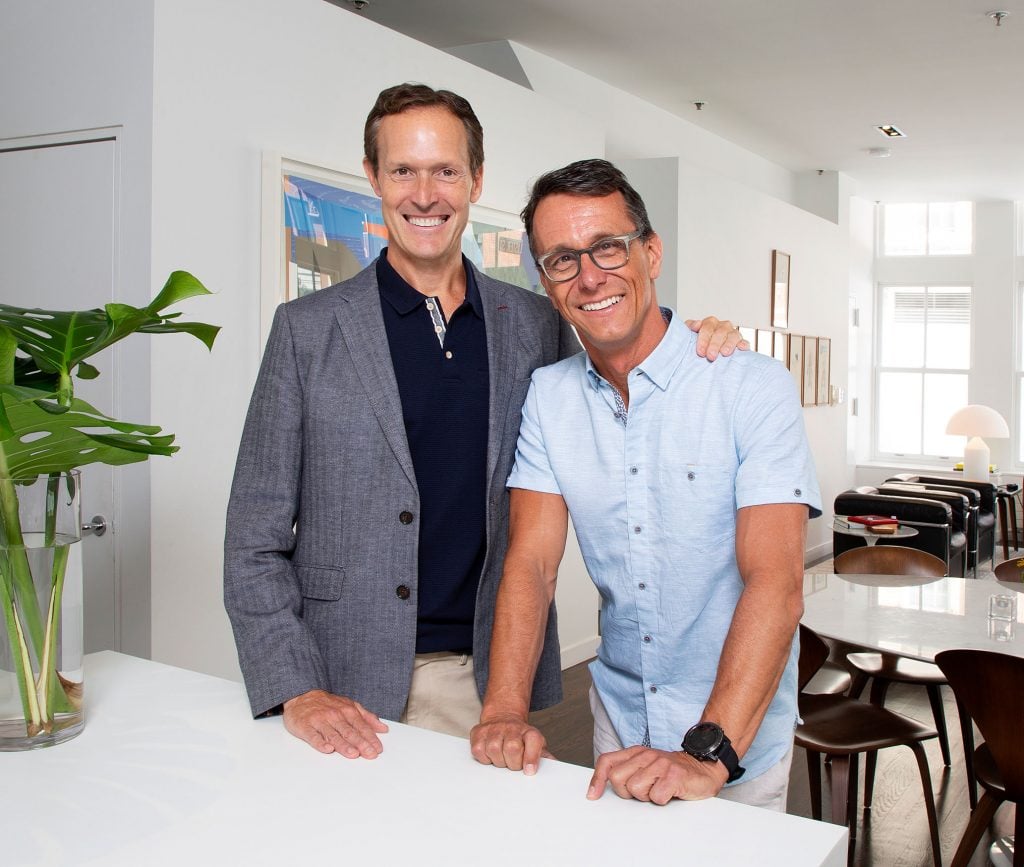
Works on paper are a particular passion for the New York-based collecting couple.

Lee Carter

Residing in Lower Manhattan—in the city’s only residential Renzo Piano building—but hailing from the American South and Germany, respectively, partners Ben Maddox and Jan Siegmund say their collection is all about “girls, gays, and Germans.” Quippy, to be sure, though the couple has put their money where their motto is, acquiring the likes of Kara Walker, Louise Bourgeois, Mickalene Thomas, Wangechi Mutu, Beatrix Milhazes, Hernan Bas, John Giorno, Louis Fratino, and Thomas Schütte.
Works on paper are a particular passion for Siegmund (who serves as CFO of Cognizant) and Maddox (CIO of Cornell University). They’ve been dedicated supporters of the IFPDA Foundation in New York for many years and, as such, will be on the lookout for new acquisitions at the IFPDA Print Fair at the Park Avenue Armory in February (they especially have their eye on Hernan Bas, who’ll have a solo booth with Fredric Snitzer Gallery).
Ahead of the fair, we caught up with the duo for the who, what, and why of their collecting habits.
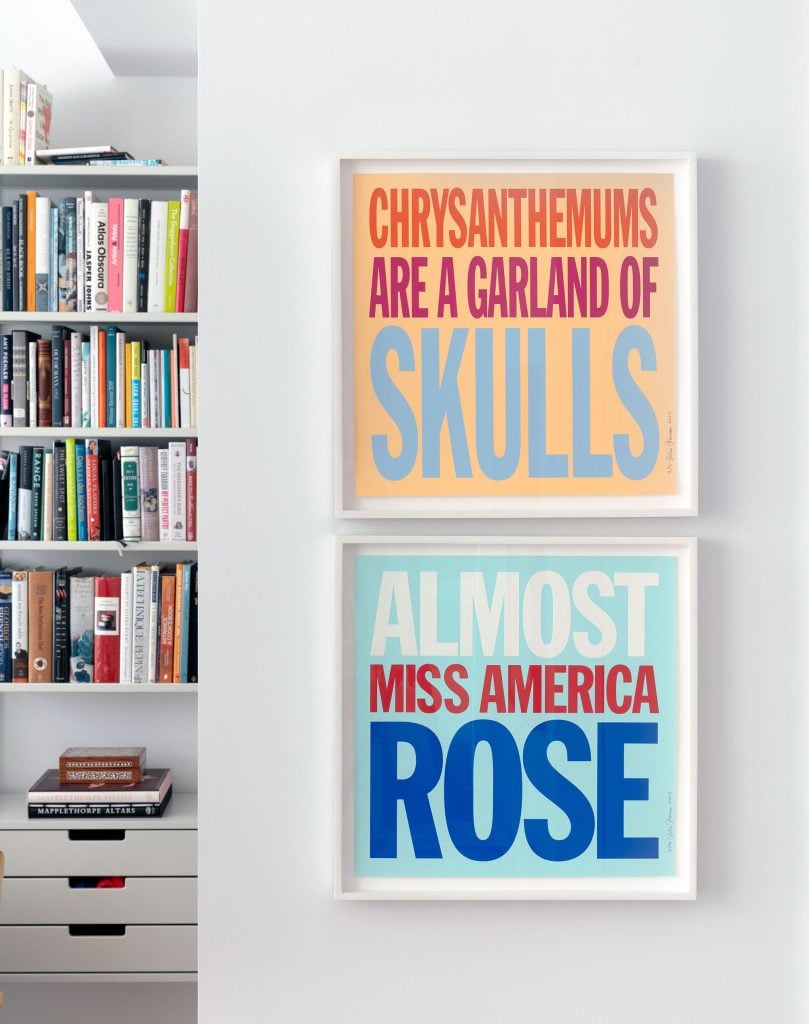
Two screenprints by John Giorno (2022). Courtesy of Jan Siegmund and Ben Maddox.
What was your first purchase?
John Giorno’s edition of 18 screenprints, “Welcoming the Flowers,” was our entry into the world of art on paper. The work was prominently featured in an art magazine and it resonated with both of us. Thought-provoking lines of poetry from a gay artist at the center of the Pop art movement captured our attention. Combining lines of poetry with beautiful color and typography create a compelling and intriguing visual experience. We loved this combination of work and color. We later added his 1991 edition of “Poem Prints” to our collection.
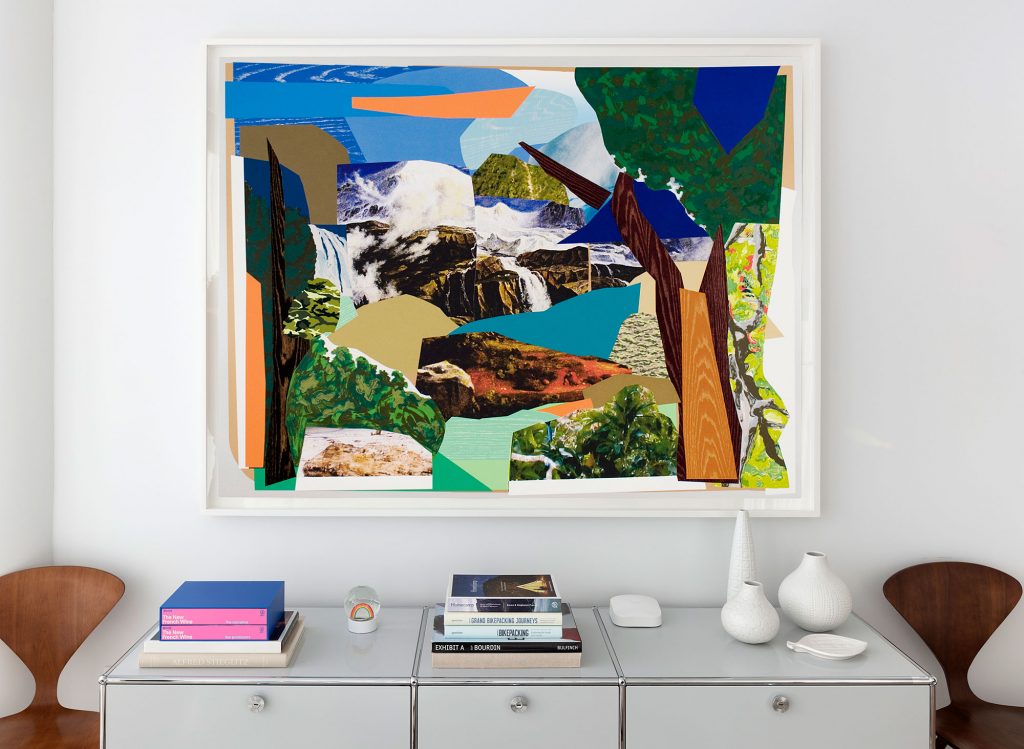
Mickalene Thomas, Landscape Majestic (2011). Courtesy of Jan Siegmund and Ben Maddox.
This purchase also brought us into contact with the publisher of the edition, Durham Press. Through many visits to the print studio, we learned much about printing and the artistic process of print creation. It created our lifelong love for works on paper. Durham Press editions by Polly Apfelbaum, Beatrix Milhazes, Mickalene Thomas, and others have since joined our collection. We value these long-term relationships in the art community.
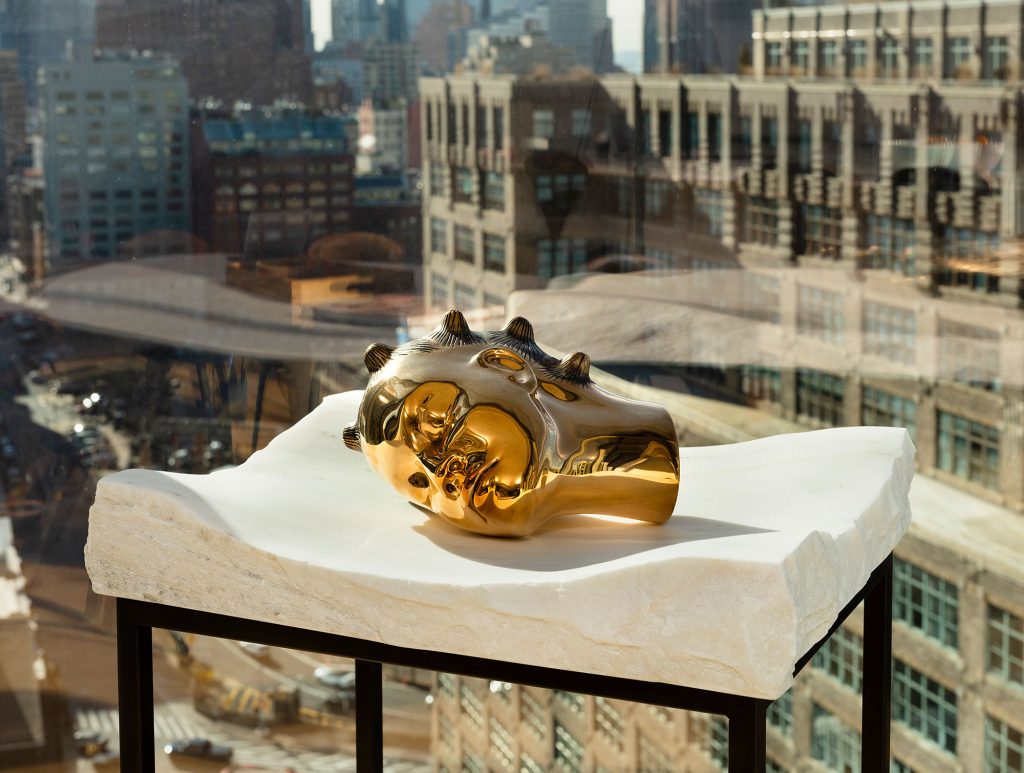
Mwotaji (The Dreamer) (2016) by Wangechi Mutu. Courtesy of Jan Siegmund and Ben Maddox.
What was your most recent purchase?
In 2023, the bronze female head Mwotaji (The Dreamer) by Wangechi Mutu entered our collection. Mutu powerfully reclaims appropriated African masks that influences so many modern artists while making a direct reference to Constantin Brancusi’s Sleeping Muse. We imagine her dreaming of a future, perhaps better than today. For many years, we had an eye on this remarkable sculpture, but none of the editions came up for sale. During lockdown, we had the chance to acquire the piece from a longtime friend and gallery owner, Carolina Nitsch, and we made the decision within seconds. It holds a prime spot in our living room.
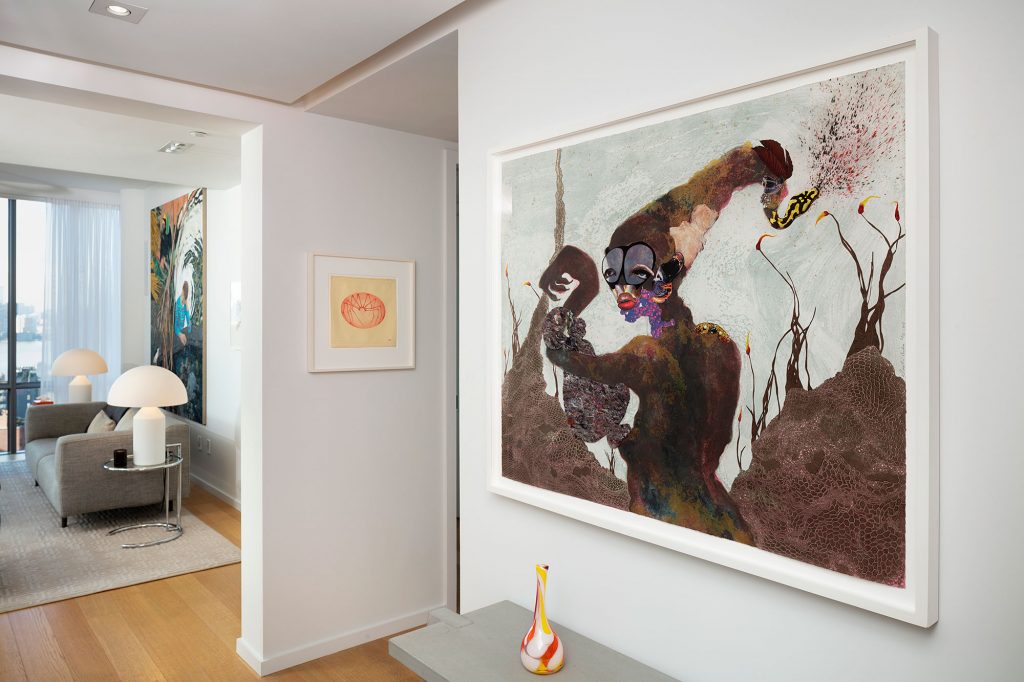
Wangechi Mutu, Second Born (2013). Courtesy of Jan Siegmund and Ben Maddox.
Wangechi Mutu has been part of our collection for many years. Her collage Second Born and the edition of “The Original Nine Daughters,” a suite of nine etchings with aquatints, linocut, and collage, have been for many years a core part of a group of strong female artists that all explore identity, sexuality, and power, each in their own vocabulary. Kara Walker, Mickalene Thomas, Julie Mehretu, Beatriz Milhazes, and—of course—Louise Bourgeois form the focal point of our collection. Their strong and decisive, honest, and thought-provoking work is a great everyday reminder for us to approach the day with an open mind, humbleness, and a sense of adventure.
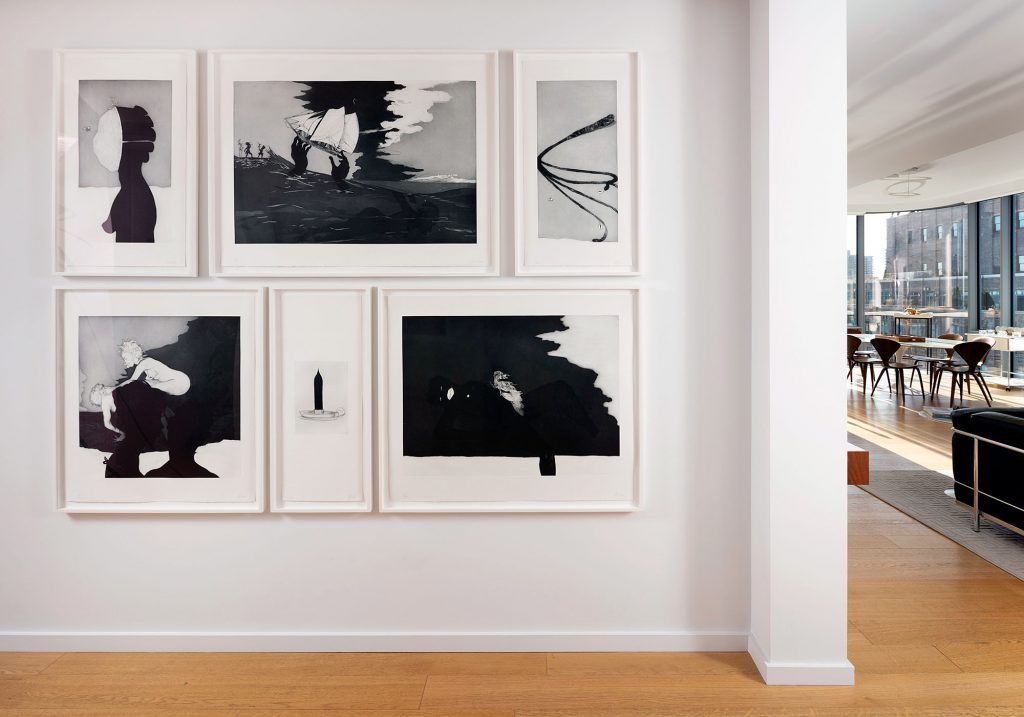
Six prints from Kara Walker’s “An Unpeopled Land in Uncharted Waters” series (2010). Courtesy of Jan Siegmund and Ben Maddox.
Tell us about a favorite work in your collection.
We value and love each of our artists in the collection. The last few years have sharpened our awareness and concern for racial equality immensely. Our own path as gay men has made us sensitive to matters of equality and justice. Gender inequality and racial disparities ring true to us as some of the most important matters of societal opportunities that long for improvement. Kara Walker is clearly a leading artistic voice to bring focus to America’s racism while, as she says, “avoiding the confluence of disgust and desire and voluptuousness that are all wrapped up in racism.” We have so much to learn from her and from her work. Her suite of six etchings and aquatints, “An Unpeopled Land in Uncharted Waters,” from 2010 forms an anchor point in our collection.
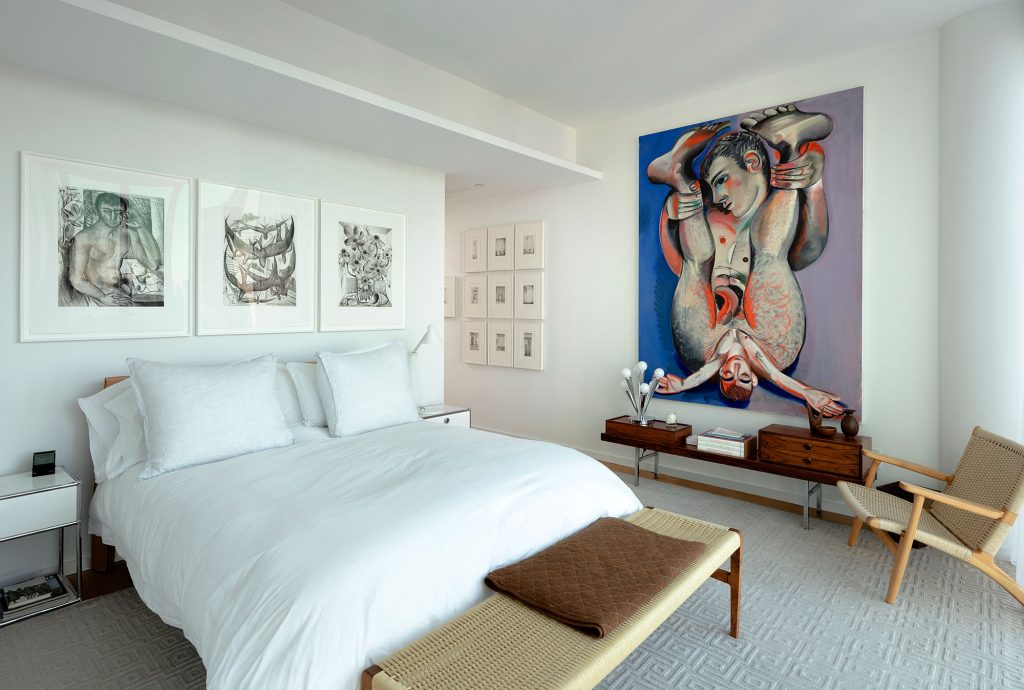
A painting by Louis Fratino at right, along with three prints by Fratino at left. Courtesy of Jan Siegmund and Ben Maddox.
Which works or artists are you hoping to add to your collection this year?
In recent years, we have added artists Lou Fratino and Derrick Adams, and are planning to add more of their works and those with similar narratives to our collection.
What is the most valuable work of art that you own?
In our collection of powerful female artists, Louise Bourgeois is sort of a godmother. We love her oeuvre dealing with gender roles, sexuality, family. Her journey as an immigrant to the United States and the longevity of her creative life is inspiring. After seeing her print retrospective “An Unfolding Portrait” at the MoMA in New York, we purchased her suite of 11 etchings and poems, “He disappeared Into Complete Silence,” created shortly after her arrival in New York. Designed to form an entry point into New York’s art community, the work incorporates some of her lifelong themes: architecture, family, survival. Louise’s story of finding community in the city somehow parallels our own journeys—one immigrating from Germany and the other from a small town in the southern United States.
Where do you buy art most frequently?
Over the years, we had the luck to form lasting relationships with a set of galleries, publishers, and printers. They helped us to find orientation in the vast world of art. Over the years, we built friendships in this community. They helped and guided us to build our collection. We also look forward to the annual IFPDA Print Fair, which brings together print publishers and galleries from around the world. It is a welcome site of discovery in New York, even for experienced collectors.
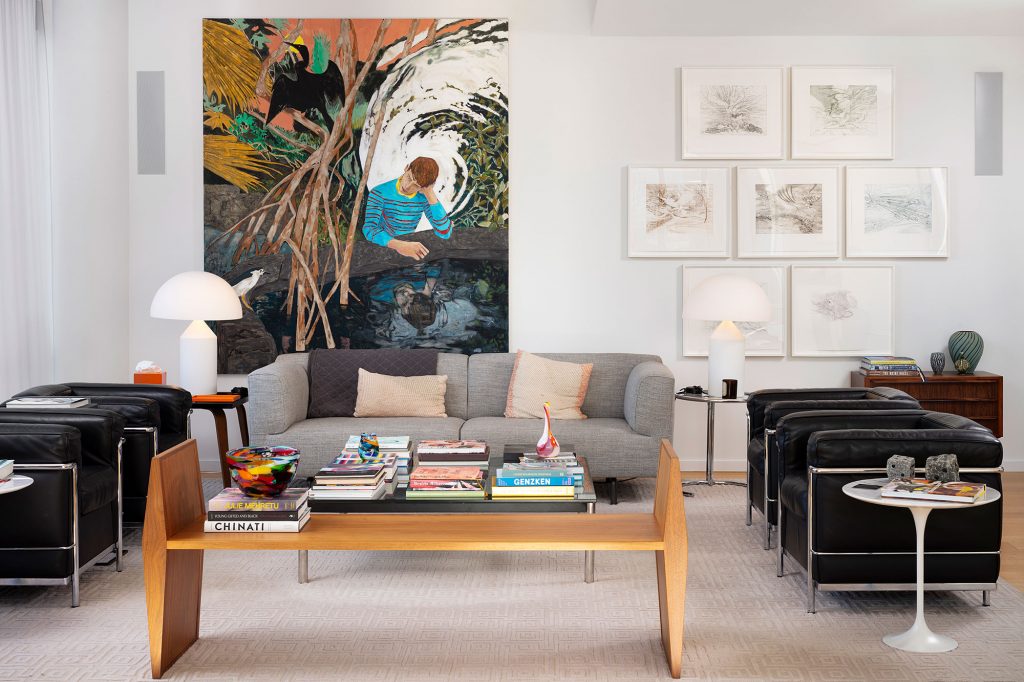
Hernan Bas, Tropical Depression (2016), alongside prints by Julie Mehretu. Courtesy of Jan Siegmund and Ben Maddox.
What work do you have hanging above your sofa?
An oil and acrylic painting Tropical Depression by Hernan Bas crowns our sofa. Our collection always included a good portion of gay artists. Hernan’s paintings of waifs, androgynes, introspective figures, often tenderly depicting a journey of coming out and finding a place in our world, resonated in very personal ways with us. Queerness, loneliness, and vulnerability imbue all of his work. Tropical Depression was painted weeks after the tumultuous 2016 presidential election. Over the years, many works of his have become part of our collection.
What is the most impractical work of art you own?
Nothing is really impractical. Our watercolors require thoughtful hanging and light protection, but it is a priority for us to make room for new work and to learn about artists new to us.
What work do you wish you had bought when you had the chance?
We have been lucky that our own journeys as collectors have paralleled many of the artists’ careers. We always want to keep an eye out for new and emerging artists who push our boundaries and that of the culture at large.
If you could steal one work of art without getting caught, what would it be?
We would need a crane, probably, but it would be some marvelous sculpture by John Chamberlain. We own a couple of his large-scale prints, but nothing beats the raw energy of his metal sculptures.
More Trending Stories:
Art Dealers Christina and Emmanuel Di Donna on Their Special Holiday Rituals
Stefanie Heinze Paints Richly Ambiguous Worlds. Collectors Are Obsessed
Inspector Schachter Uncovers Allegations Regarding the Latest Art World Scandal—And It’s a Doozy
Archaeologists Call Foul on the Purported Discovery of a 27,000-Year-Old Pyramid
The Sprawling Legal Dispute Between Yves Bouvier and Dmitry Rybolovlev Is Finally Over